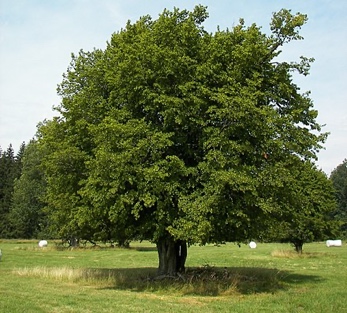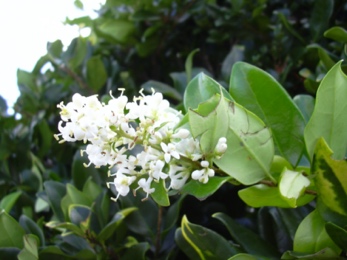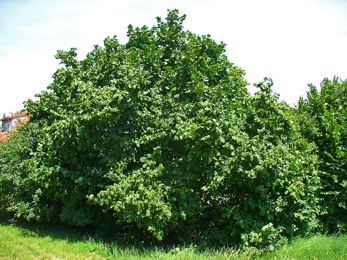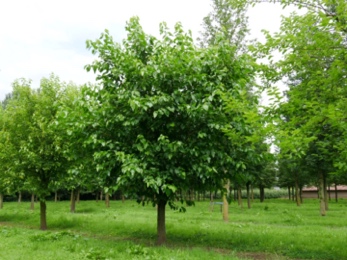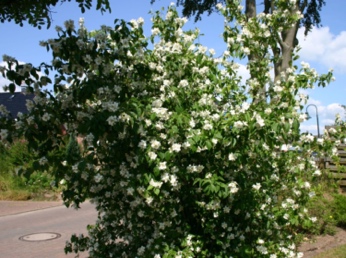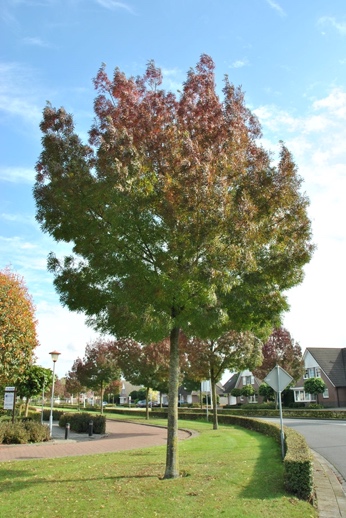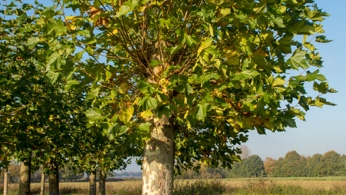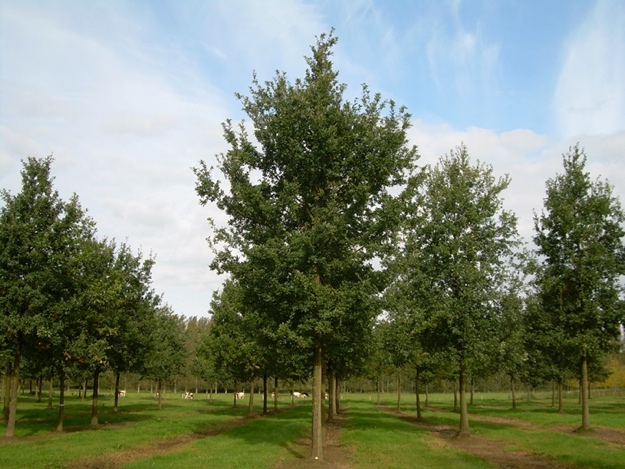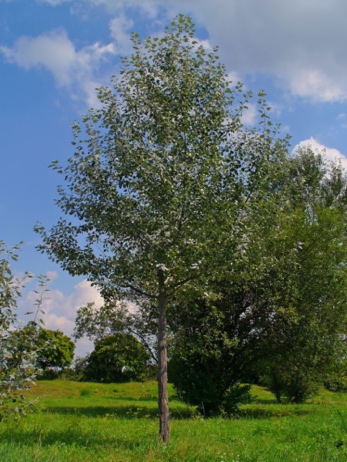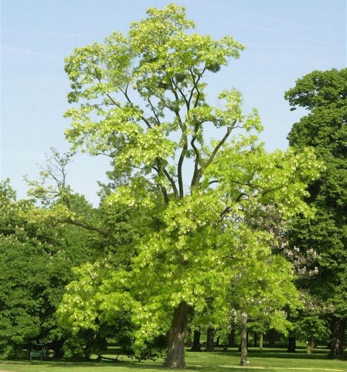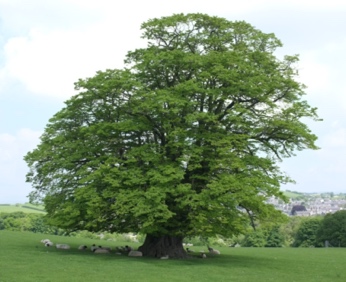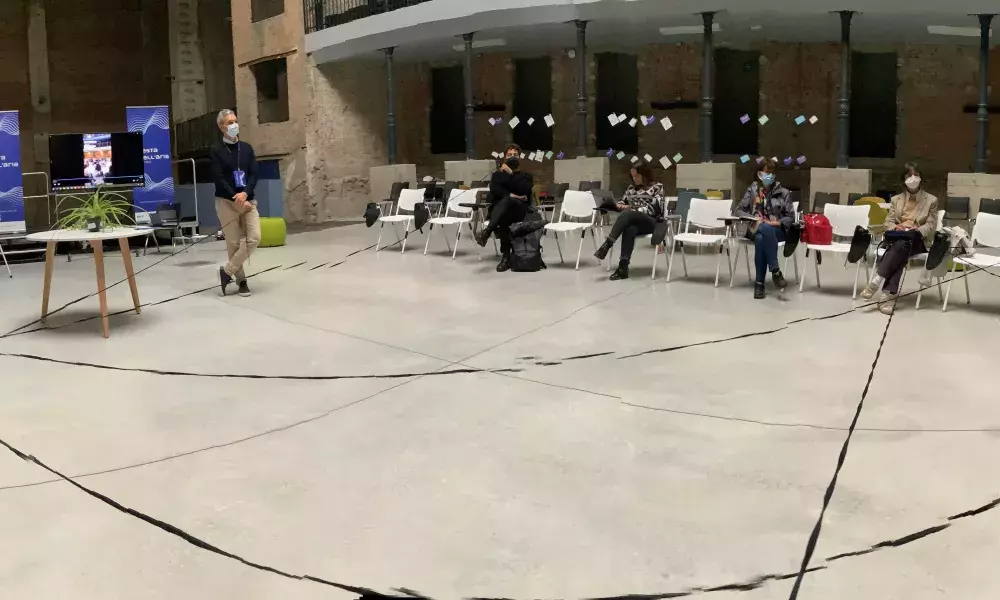
Human activity – and chiefly agriculture; industrial production; private heating; and motor vehicle traffic – is the core responsible for polluting emissions in Ferrara. Thereby, the proposal is designed to trigger an integrated process of awareness-raising and behavioural change accompanied by environmental and infrastructural upgrades.
In doing so, Air-Break plants 2000+ trees and shrubs with phyto-absorbing properties; enhances its cycling infrastructure with the installation of smart hubs and a smart bike lane; deploys a network of air-quality monitoring stations and sensors connected to an innovative, integrated digital system; and adopts a variety of citizens and stakeholders’ engagement strategies and tools.
EXECUTIVE SUMMARY
This first Journal for the Air-Break Ferrara project intends to provide an overall introduction to the project aims and objectives, to frame it within the EU, national and local policy frameworks, as well as to analyse the progress of- and challenges to its implementation.
The city of Ferrara is located in the North-Eastern part of Emilia Romagna Region, along the Po River. The city hosts a population of ca. 132.000 inhabitants and for its beauty and cultural importance, it has been designated by UNESCO as a World Heritage Site. Nonetheless, Ferrara is also one of the most polluted cities in Italy, with severe environmental issues and a dramatically high incidence of respiratory diseases.
Therefore, the overarching goal of Air-Break is to reduce by 25% air pollution in selected areas of the city., and it will do so simultaneously deploying Nature-Based Solutions, infrastructural upgrades, technological equipment, and awareness-raising and citizens and stakeholders’ engagement initiatives.
At nearly mid-term of the project life, Air-Break’s implementation is steadily progressing and has been able to trigger and carry-out several citizens and stakeholders’ engagement initiatives; to deploy and start the activation of the local air-quality monitoring network; as well as to significantly advance in the executive design phases for the major physical investments.
Overall, the project did not suffer any major delay or deviation from the original work-plan, however its implementation faced a number of operational challenges, especially in terms of public procurement, participative approach for co-implementation, as well as communication with target beneficiaries.
STATE OF THE ART
Air-Break set the ambitious goal of reducing air-pollution by 25% in the most critical areas of the city. In doing so, the project will tackle air-quality issues through a set of integrated actions along four core strategic fields:
- Nature-Based Solutions, with the plantation of phyto-absorbing species along the main access roads to the city, towards the simultaneous enhancement of the quality of the green environment, as well as of its resilience and capacity to mitigate air pollution.
- Infrastructural upgrades, with the development of an innovative smart bike lane and multifunctional Smart Hubs, towards the promotion and enhancement of sustainable mobility opportunities.
- Technological equipment, with the deployment of mobile air-quality monitoring stations, as well as of innovative digital services and gamification applications, towards the incentivisation of environmentally friendly behaviours.
- Awareness-raising and citizens and stakeholders’ engagement, with the involvement of the local community in the monitoring of air-quality and establishment of a pro-active participatory process and co-design living labs, towards the strengthening of collective ownership of- and responsibility towards the project’s issues, actions, and goals.
Remarkably, these actions are conceived to pursue field-specific thematic objectives while – thanks to their integration under a holistic approach – simultaneously contributing to the achievement of a broader city-development strategy.
Accordingly, from a field-specific point of view, the different actions deployed by Air-Break should contribute to the achievement of:
- An established monitoring system based on existing regional data sources as well as on a new network of sensors deployed within the framework of Air-Break.
- Improved air quality levels in selected critical areas of the city.
- Increased number of people preferring soft mobility.
- Reduced emissions by reducing car traffic and congested areas.
- Improved commuting opportunities in strategic areas of the city.
- Improved perception of well-being among citizens, especially in the areas targeted by the project investments.
- Increased participation of citizens in the local social life as well as to urban planning decisions.
- Enhanced evidence-based strategic decision-making power and capacity of the Municipality of Ferrara.
And ultimately, the successful implementation and integration of innovative and accessible smart technologies, nature-based solutions, and community engagement all contribute to the ongoing process of transformation of Ferrara into a smart and sustainable city.
Ferrara’s UIA project is aligned and coherent with thematic policy frameworks set at the EU, national, as well as regional levels. In this context, Air-Break not only addresses core environmental challenges, but – possibly more importantly – it also sets a new replicable operational approach towards the achievement of the goals and objectives defined at policy level.
European Level
The project intercepts the European policy framework on air-quality from multiple standpoints. In particular, Air-Break embraces the main objectives set by Directive 2008/50/EC of the European Parliament and of the Council. The Directive aims at defining objectives for air-quality to avoid, prevent, or reduce harmful effects on human health and the environment; monitoring and assessing air-quality in order to help combat air pollution; ensuring that information on air-quality is easily made available to the public; and ultimately improving air-quality. And this is precisely what Air-Break intends to achieve.
Under the overarching, signature aim of co-producing healthy clean commuting air spots in town, indeed, the project outlines a vision of the city where the pursue of good air-quality is the driver towards sustainable urban development and, eventually, enhanced well-being. In doing so, evidence-based decision-making and the proactive engagement and commitment of the local ecosystem of citizens and stakeholders are two essential components. Therefore, the strong focus of Air-Break on participatory air-quality monitoring, aimed not only at enhanced public awareness but also at the stimulation of virtuous and environmentally friendly behavioural change, ultimately towards the improvement of air quality in the city. Moreover, this approach is also aligned with the recommendations issued by EEA with Report 24/2018, which highlights how city scale actions have a considerable potential to address local sources of air pollution and encourage behavioural change to help improve air quality.
Additionally, a relevant share of co-creation activities deployed by Air-Break specifically target local children and youth, and this very well intercepts the recently launched European Youth Goals, and in particular Goal Number 10, which aims at:
- Ensuring everyone including young people knows the effect of their actions on the environment.
- Empowering the entire society especially young people to act as agents of change for environmental and sustainable development.
- Ensuring everyone, especially young people, has access to eco-friendly infrastructure for living a more sustainable lifestyle.
- Expanding research and innovation into eco-friendly solutions and technologies.
National and Regional Levels
At national level the regulatory framework is provided by Law Decree Nr. 155/2010, which adopts all EU regulations for the assessment and management of air-quality. Operational responsibilities to implement air-quality monitoring and evaluation and to identify and deploy management and mitigation measures are instead delegated to the regions, Emilia Romagna in the case of Ferrara.
At regional and local level, Air-Break fits within the scope and goals of three key policy instruments:
- The Regional Integrated Air Plan (PAIR 2020) which aims at reducing air-polluting emissions in line with EU directives by adopting an integrated, multisectoral approach. focussed on sustainable urban management; within this framework, the focus on sustainable urban management, sustainable mobility and green communing is particularly relevant for Air-Break.
- The Integrated Regional Plan for Transportation (PRIT2025), which aims to achieve 20% of bike mobility by 2025.
- The city’s Sustainable Urban Mobility Plan (SUMP) aiming at a 20% reduction in traffic flows within the residential area, ultimately improving citizens quality of life.

AIR-BREAK PROGRESS UPDATES
At nearly mid-term of the project life, Air-Break’s implementation is steadily progressing. At the time of my writing (November 2021), the project has been able to trigger and carry-out several citizens and stakeholders’ engagement initiatives; to deploy and start the activation of the local air-quality monitoring network; as well as to significantly advance in the executive design phases for the major physical investments.
The involvement and active participation of the civil society is a fundamental aspect of any UIA project. Air-Break is not an exception, as a major variable to its final success is precisely related to the degree of citizens and stakeholders’ engagement in- and ownership of the actions and objectives of the project. In particular, Figure 2 illustrates the levels of engagement, media, and results expected by the project.

Achieving such a high degree of engagement of the local civil society is always a crucial challenge, even without limitations to public gatherings. Doing so under the peculiar circumstances imposed by the COVID-19 pandemic added a further level of complexity to the implementation of Air-Break’s ambitious participatory programme.
In this context, Project Partners have been called to identify creative ways to rethink and reorganise the original plans and shift part of the participatory and co-creation activities to either a hybrid or full-online mode. Thereby, the largest part of the Air-Alliance’s participatory living-labs was indeed carried-out online via Google Meet, using Miro boards as a co-creation platform (see Figure 3).

From an operational point of view, implementing this transition posed unexpected core challenges, especially in terms of how to reach, attract, and actively involve a wide and extremely diversified range of citizens and stakeholders within a new, immaterial arena.
The strategy adopted by the project was to design a set of co-creation pathways capable of attracting and involving actors and stakeholders already connected/linked with the activities of Air-Break’s core Work-Packages, and therefore to tap-on existing trust/collaboration relationships between project partners and the local socio-economic ecosystem. This allowed to identify a number of champions or ambassadors that helped spreading the project’s message within their own sub-communities, and ultimately to largely increase the critical mass of engaged participants. In doing so, the key proved to be identifying a specific, shared thematic goal/objective upon which to collaborate in a win-win situation, and to clearly convey to the target participants the potential gains and benefits of such a collaboration. The processes to involve, on the one hand, the mobility managers of local companies, and, on the other hand, local high schools are exemplary:
- Mobility managers were approached with respect to a study on commuting patterns and the activation of gamification-based behavioural change campaigns. At first, however, the delegates from the project have been perceived as controllers or supervisors, and therefore companies have been reluctant to be engaged. Project partners, then, had to reconsider their approach and strategy and currently are working collaboratively with companies and mobility managers to structure a shared action-plan.
- The project offered to several local high schools the opportunity to join the participatory air-quality monitoring programme, and to install in their premises one of the fifty low-cost air-quality sensors. In this case, the response from schools has been very positive and beyond the initial expectations. To date, indeed, nine high schools have incorporated Air-Break’s topics and activities in their curriculum. As part of their educational activities, students have been involved in workshops for the assembly of all of the fifty low-cost sensors and will work on air-quality monitoring and assessment throughout the school year.
Thanks to this approach, and under the guidance and leadership of Milan’s Polytechnic, between April and October 2021, Air-Break has been able to organise 24 single (chiefly online/hybrid) activities and the Air Fest – a 3 days of events and workshops in Ferrara – overall engaging a total of 783 attendees and more than 90 entities and organisations.


system for air-quality monitoring. This new system on the one hand complements the 4 official third-level AQ monitoring stations managed by ARPAE[1] with a network of additional 14 second-level monitoring stations (hereinafter, Lab Service stations) and 50 first-level low-cost sensors; [2] on the other hand aims at providing real-time data on air-quality to both policy-makers and citizens under different formats and through different means/media.
As of early October 2021, twelve Lab Service stations have been installed and activated, while the low-cost sensors are being currently assembled by high-school students and will be ready in the coming months. Figure 6 shows the precise position of ARPAE and Lab Service monitoring stations (red and blue, respectively). The location of the low-cost sensors (green) is still not final because – apart from nine sensors that will be installed in the premises of the high schools that joined the programme – the project plans to distribute them to selected citizens and stakeholders that will be engaged in the near future.

At the time of my writing, both ARPAE and Lab Service monitoring stations are already feeding the Air-Break AQ monitoring network: all data collected in real-time from all the different the monitoring stations is gathered in a unique dataset stored on a dedicated server. From there, data can be extracted, elaborated, and shared to multiple targets through different media and platforms. In this initial stage, data are visible to a selected audience via the MUA’s GIS, and Figure 7 offers a preview of the information provided for each monitoring station, which include the concentrations of different pollutants and their evolution on a timeseries.

In the next stages of the project, the assembly and installation of all low-cost sensor will be completed, and air-quality data will be made publicly available. In this sense, Project Partners are currently working with citizens and stakeholders on how to share and visualise these information. In particular, the main operational challenges currently at stake concern:
- The identification, design, and implementation of the most suitable means to convey the data. These include online tools such as a website and a mobile app; and physical devices such as totems, info-boards, monitors, as well as a 3D model of the city.
- The definition of the level of detail, granularity, and frequency of data that will be displayed.
- The design of the graphic/visual outputs of data according to each of the selected media/means.
The first step in this direction was taken during the Air Fest, with the organisation of a workshop with selected stakeholders and experts on “Humanising” Air-Quality Data: Towards a Participatory Design of Information. Project Partners are currently analysing the inputs from the workshop and are elaborating proposals to be discussed again with stakeholders. Following this process, the alpha version of the public website is expected by the end of 2021, and other forms of data visualisation during the course of year 2022.
[1] ARPAE (Agenzia Regionale per la Prevenzione, l'Ambiente e l'Energia dell´Emilia-Romagna) is Emilia Romagna’s regional agency for environment and energy
[2] AQ monitoring stations are categorised along three levels, according to their performance, accuracy, and economic value, with third-level stations ensuring the highest accuracy of data at the highest costs.


Air-Break’s main investments encompass three key items: (1) the plantation of 2000 new trees and shrubs with phyto-absorption capacities; (2) the laying of a smart cycle lane; and (3) the installation of four Smart-Hubs. At the time of my writing, all three investments have advanced to the executive design stage and are therefore ready to be deployed on the ground.
Phyto-absorbing plants
The new plants are expected to contribute absorbing air pollutants (e.g., PM2,5 and PM10; nitrogen oxides; ozone), to mitigate heat-island phenomena, as well as to overall benefit urban drainage. In pursue of this threefold set of objectives, the project identified the vegetal species listed in Table 1, and – as shown in Figure 10 – defined their localisation in five strategic parts of the city, in particular along the main commuting axis, the city walls, and around the area of the trade fair.
Table 1 - Selected Trees and Shrubs. Source: the Author
| Species | |||
|
| Carpinus Betulus |
| Hibiscus Syriacus |
|
| Celtis Australis |
| Ilex Aquifolium |
|
| Cornus Sanguinea |
| Ligustrum Sp. |
|
| Corylus Avellana |
| Morus Alba |
|
| Eleagnus x Ebbingei |
| Philadelphus Coronarius |
|
| Fraxinus Angustifolia |
| Platanus x Hispanica |
|
| Quercus Robur |
| Populus Alba |
|
| Robinia Pseudoacacia |
| Rosa Canina |
|
| Tilia Cordata |
| Viburnum Sp. |

Additionally, the new vegetal species will be planted using the Tal-Ya™ trays: an innovative technology that collects and conveys dew towards the root system of plants, thus allowing savings in maintenance and watering (and ultimately environmental) costs. From an operational point of view, this investment posed two challenges to the project implementation. On the one hand, the definition of planting locations had to be agreed upon in collaboration with the MUA’s environmental and heritage-protection services, in order to avoid damages to- and preserve the scenery views of the city walls and other valuable architectonic heritage. On the other hand, being the Tal-Ya trays a unique, patented product, the Municipality had to procure them via a direct-acquisition procedure.
Smart Cycle Lane
The smart cycle lane will develop between the Scientific and Technological Pole of the University of Ferrara (Tecnopolo) and Corso Isonzo. This new infrastructure aims at closing a gap in the existing cycling network of the city, ultimately allowing an uninterrupted, protected cycling connection between the Tecnopolo and the city centre.

This new stretch of cycle lane will be partially built adopting the patented, hi-tech modules mOOve™: an innovative technology that allows to embed in the pavement not only a set of safety features (e.g., led-lightening, anti-frost) but also, and more importantly, a variety of sensors (e.g., users-counter, air-quality, etc…) that can provide an additional wealth of data to the city’s mobility and AQ monitoring networks.

However, the purchase and installation of the mOOve™ modules posed a relevant challenge in terms of procurement and leadership. Indeed, it was unclear to the MUA whether proceeding with a direct acquisition from the producer instead of opening a public tender would comply with both national and European regulations. In this context, and in order to avoid undertaking non-eligible expenses, the Municipality’s staff adopted a strong risk-adverse approach and spent several months in deciding which procurement approach to adopt, ultimately risking to delay the final delivery of the investment.
Smart Hubs
The so-called Smart Hubs, designed by Project Partner Hera S.r.l., are conceived as integrated docking/charging stations for electric light-mobility vehicles (e.g., e-bikes, e-scooters, etc…) complemented with additional customisable features and functions (see Figure 13).

The locations (see Figure 14) and the design of the basic structure of the hubs are already final, while the additional features of each hub are being discussed with selected experts and stakeholders in a series of participatory workshops organised within the scope of Air-Break.

Currently, the concept underlying the Smart Hubs’ design and location is based on either of these scenarios:
- Short term parking while performing leisure activities, especially relevant for the hub located at Darsena.
- Long-term day-time parking, especially relevant for the hubs located at the railway station and at the Technopole.
- Long-term overnight parking, especially relevant for the hub located in the residential area Corti di Medoro.
Nonetheless, these scenarios are not based on a thorough study of the typologies of e-vehicles users and of their needs and expectations. Rather, they consider as potential target users only individuals that use their own e-bike/e-scooter occasionally or on their daily commuting, while leaving out the whole range of (existing and potential) professional e-vehicles drivers.
In this sense, the Smart Hubs pose critical operational challenges with respect to communication with target beneficiaries. As a consequence, the project might not fully grasp and exploit the innovation potential of this investment and its contribution and impact in the transition towards non-polluting mobility. Rather, in their current form, the Smart Hubs can undoubtedly become visible, hi-tech landmarks for the Air-Break project, but at the same time they face the risk of being strongly underused.
Overall, the Air-Break project is proceeding in smoothly its implementation, without any major delay or deviation from the original work-plan.
As a final remark, while significant progress can be reported on all strands of activity (i.e., Nature-Based Solutions, infrastructural upgrades, technological equipment, and awareness-raising and citizens and stakeholders’ engagement), the connection and integration among the different elements of the project is still not fully explicit. For the future, it would be indeed recommendable to overcome “silo” way-of-thinking and valorise the multiple tiles of the project as components of a unique system.
UIA OPERATIONAL CHALLENGES
The MUA is strongly committed to the project both at political and technical level. On the one hand, Air-Break is a priority for the city’s administration, and this ensures the full support and the direct, active involvement of political authorities in the project activities and public events. On the other hand, all senior managers from the different departments involved are engaged in- and stimulated towards the development and successful and timely implementation of project activities.
Most of public procurement procedures have been completed already, yet challenges emerged in the identification of the most suitable procedure for the acquisition of patented products. A rather low familiarity with UIA programme regulation combined with a high adversity to risk might cause delays in the deployment of investments.
The MUA established two bodies to ensure a smooth cross-department harmonisation:
- A core Project Management Unit (PMU) composed by senior managers and senior staff from both the General Directorate / International Relations and the Environmental Quality Service, which is in charge for the overall coordination of the project.
- The Operational Team (OT), composed by the managers of all departments involved in the project, which regularly meet and align their activities.
Traditionally rooted silo-mentality within the administration is still a challenge, yet the regular meetings of the PMU and OT sensibly contribute mitigating this
All Project Partners are strongly invested and engaged in the project and in the successful implementation of its activities. There is a very good degree of interaction among project partners, local stakeholders, and the civil society in the co-implementation of the different actions/activities related to the air-quality monitoring network. In particular, the larger group of stakeholders has been very active and engaged, with the prominent participation of local high-schools, the regional environmental agency - ARPAE, as well as of a number of national-level associations and interest groups (e.g., Legambiente, FIAB)
However, many elements of the project are still not fully integrated among themselves and are hardly conceived as components of the same unique system. In this sense, it would be greatly beneficial an additional effort in overcoming some still persisting silo-thinking towards a more project-wide attitude.
The project is currently about to complete the preparatory works for both its soft activities and hard investments, thereby it is still too early to deploy and implement a monitoring and evaluation framework. Nonetheless, due to the complexity and multiplicity of variables that influence air-quality, assessing and isolating the specific impact of Air-Break will be a major challenge.
Communication with target beneficiaries has been a crucial challenge throughout the first half of the project lifetime.
On the one hand, Air-Break has been scarcely visible to the public for several months after the start of the project. Indeed, the implementation of the communication plan only started in October 2021, after the engagement of an external expert. As of late October 2021, the project visibility on social media strongly increased and now updates, posts and news items are published on a regular basis.
On the other hand, due to the limitations imposed by the COVID-19 pandemic, the project could not organise any public event/engagement activity in Ferrara for more than one year (until summer 2021) and has been forced to convert the vast majority of participatory activities to an online mode. As a consequence, project partners decided to involve in the first stages of the participatory journey only selected stakeholders and participants – hence, de facto limiting the potential outreach of Air-Break.
Additionally, as mentioned in the case of the Smart Hubs, the low degree of involvement of potential target beneficiaries might undermine the full exploitation of some investments’ innovation potential
Air-Break has a manyfold upscaling potential:
- At the end of the project, and on the basis of the results achieved during implementation, the MUA intends to extend and mainstream Air-Break’s experimental approach to the whole city’s integrated sustainable urban planning policy.
- Thanks to the active involvement of ARPAE in the larger group of stakeholders, Air-Break’s approach to AQ participatory monitoring has the potential to be scaled-up at the regional level.
- The products and technological solutions tested within Air-Break also have the potential to be adopted and replicated elsewhere.
REFERENCES
Air-Break Project, 2021. Deliverable 7.2.3 AIR-BREAK Co-Design Events Intermediate Report
Air-Break Project, 2021. Deliverable 8.6.1 Technical Drawings
Decreto Legislativo 13 agosto 2010, n. 155. Attuazione della direttiva 2008/50/CE relativa alla qualità dell'aria, ambiente e per un'aria più pulita in Europa
Directive 2008/50/EC of the European Parliament and of the Council
European Environment Agency, 2019. Europe's Urban Air Quality — Re-Assessing Implementation Challenges in Cities. doi:10.2800/214599
About this resource
The Urban Innovative Actions (UIA) is a European Union initiative that provided funding to urban areas across Europe to test new and unproven solutions to urban challenges. The initiative had a total ERDF budget of €372 million for 2014-2020.
Similar content


